|
By HISTORIAN AND AUTHOR ANGELO BISSESSARSINGH (2010)
For most Trinidadians, no Christmas season would be complete without a trip to Frederick St in Port of Spain to take advantage of bargains, window-shop and to savour the whirl and rush of humanity occasioned by the hectic Christmas atmosphere. This photo dates from 1950. With the jolly season now in full swing, we begin to be aware of those annual occurrences which make Christmas in Trinidad a unique and savory experience. The hams have begun to put in appearances in the supermarket freezers, and the ruddy hue of sorrel on the wooden trestles of roadside hucksters. Demijohns of ginger ale have begun to grace windowsills for fermentation, and notwithstanding the astronomical price of the raw material, most assuredly will give a sharp bite to those who dare to partake of the aged vintage. Errant bakers of the domestic kitchens are sampling with gusto the rum-drenched dried fruit which have been soaking since the middle of June and which will soon form an integral part of an aromatic fruit cake. Toys which range from the simple trinkets of a bygone era to complex mechanisms with embedded microchips have commenced their temptation of young desires who fervently hope that Santa will bestow upon them, the rewards of a year of good behavior. Amidst the thick air of anticipation and festivity it would not be amiss to take a retrospective look at local Christmases of yesteryear. Almost every nostalgic Trinidadian and Tobagonian can tell stories of the ham being boiled in a pitch-oil tin, the flurry of new curtains, paranderos and the joyous tedium of pastelles on the make, but I intend to take a more historically systematic view when looking at the Trini Christmases Past. In the pre-emancipation era (1834 and earlier) Christmas was celebrated in the plantation great houses with much pomp and ceremony as befitted the status of landed gentry. With the influx of French settlers with the 1783 Cedula of Population, Christmas balls became fairly commonplace, graced no doubt by lavish dinners of wild meat roasts, consommés of local fruit, and wines imported from Europe. The house slaves of the estates would have been the grateful end beneficiaries of the residue of these Christmas revels of the masters. The pleasure of the field slaves were infinitely more simple and consisted of little more than an extra allowance of food and perhaps a length of cloth. One account from 1823 tells of a Christmas on Lopinot’s La Reconnaissance cocoa estate where slaves were given a dole. The account runs thus ‘At nine o’clock while at breakfast, the whole of the negroes came dressed in the gayest clothes to wish us a Merry Christmas, and a piece of beef and an allowance of flour and raisins were distributed to all of them with a proportion of rum for the men and wine for the women.’ The writer continues to describe how the slaves were given two suits of clothes each, following which they visited the cemetery of the Lopinot family (still to be seen) where prayers were said for the departed Comte de Lopinot and flowers strewn over the huge unmarked gravestones. With the advent of East Indian labourers on the sugar and (to a lesser extent) cocoa estates of the island after 1845, Christmas took on a dimension of minor importance. Mostly, the labourers were Hindus and Muslims and therefore did not celebrate Christmas. Admittedly, some aspects of the field slave Christmas still survived as 19th century accounts tell of one proprietor’s wife in Central Trinidad, Elisa DeVerteuil, sharing out an annual bonus of flour, cloth and other staples to the East Indians of Woodford Lodge estate. The arrival of Rev. John Morton in 1868 marked the commencement of the Canadian Mission to the Indians (CMI) through the auspices of the Canadian Presbyterian Church. Under the influence to the early missionaries of the CMI, Christmas became a more regular occurrence in the predominantly Indo-Trinidadian sugar-belt communities of Central and South Trinidad. Those early CMI Christmases were simple affairs, with carols being sung (some in Hindi through the translations of the Rev. Dr. Kenneth Grant and Lal Behari) and presents in the form of decorated cards and booklets being distributed, these being sent from mission fields in Canada for the benefit of their ‘heathen’ brethren in Trinidad. Conversely, as is recorded by Sir V.S Naipaul in A House for Mr. Biswas, Indo-Trinidadian Christmas celebrations in the estate barracks comprised for the most part of a surfeit of food and grog, after which a spate of wife and child beatings would inevitably follow to cap off Christmas Day revelries. Christmas for the urban Afro-Trinidadian, particularly for those of the barrack-yards of East Port of Spain, was a more complex affair although like their East Indian contemporaries, Yuletide activities invariably involved the consumption of copious libations of spirits, sometimes with unwelcome side-effects. The seminal thesis on life in the barrack-yards published by James Cummings (Barrack-Yard Dwellers) gives an insightful window into the Christmases of these unique inner-city environments. Cummings tells of old curtains being boiled in a broth of tea-leaves to brighten the fading textiles, when new pieces could not be afforded. Crockery, which languished year-round as ornaments would be washed in anticipation of the Christmas feast, the preparation of which was a process in itself. According to Cummings, chicken, ham and beef would be prepared according to the circumstances of the families. ‘Professional’ women known as matadores, would be provided with money beforehand by their male ‘keepers’ and would indulge in much food and drink for the big day. The all important preparation of the fruit cake would be supervised by ‘peel men’ at local bakeries, which in fine Dickensian style, would take in the batter of the barrack-yard cakes to be baked. The peel men were sometimes tipsy from numerous shots of rum, so often the cakes met with disaster when being slipped into and out of the mud ovens with a long-handled wooden paddle known as the ‘peel’. The menfolk of the barrack-yards were not left standing in the Christmas bustle. Months beforehand, they would purchase gallons of poor-quality rum known as ‘ca-ca-poule’ to which would be added tonka beans, citrus peel and even methylated spirits to increase the mellowness and potency of the rum. A more dignified barrack-yard Xmas dinner of the 1930s is recounted in C.L.R James’ Minty Alley wherein the well-furnished table of Mrs. Rouse is graced by a quart of iced champagne, good company and the unique camaraderie of a truly Trini Christmas. A valuable glimpse of a Christmas of the white planter elite in 1911 is given by P.E.T O’Connor, whose grandfather, Gaston De Gannes was one of the last aristocratic French-Creole patriarchs of the plantation era and who presided over his stately home, La Chance, near Arima. Every Christmas, De Gannes’ large family would descend on La Chance, complete with a battery of maidservants for care of the children. O’Connor describes the Christmas morning ritual where the children were sent up to Gaston’s room to pay him their season’s compliments: ‘He would be standing in his bedroom near his huge wardrobe with its doors open, as on the inside was tacked a neatly written list of grandchildren. As we all paraded in and out with our good wishes, he would consult the list and hand out the appropriate largesse. A golden sovereign to the eldest son of each family, a half sovereign to the eldest girl and a silver crown or half-crown to the younger children’. In terms of the monetary values of the day, the golden sovereign coin was worth more than an entire year’s wages for one of the labourers on Gaston’s cocoa estates. O’Connor goes on to describe the breakfast of hot chocolate and bread, followed by Mass at Santa Rosa R.C Church, the day being crowned by a magnificent family dinner, graced by Bordeaux wine and French claret. The emergence of parang is really attributable to the influx of peons, called the panyols, of Venezuela, who provided a significant percentage of the labour force during the cocoa boom years of 1870-1920. While parang has become fairly commercialized of late, the Christmas ritual, introduced by the panyols, actually involves three stages. In Lopinot, the tradition held true for many years, preserved by such sages as Sotero Gomez and Pedro Segundo Dolabaille. The first stage is when upon arrival at a hospitable home, the paranderos would sing from the doorstep, an Aguinaldo, or song of praise, telling of the Nativity, Adoration or Ascension of Christ. This is the signal for the householder to throw open his/her doors to the paranderos who continue to serenade the home with Aguinaldos until the descanso, or rest period, when the bards are regaled with victuals and drink consisting mainly of ham, pastelles and fruit cake, as well as sorrel and ginger beer. From the doorsteps of the countryside, the parang music was taken to a national level by the artistry of pioneers like the late Parang Queen, Daisy Voisin and the Lara Brothers. While on the subject of music, it is interesting to note that in San Fernando during the 1870s to the 1890s, the crown jewel of the town’s Christmas events calendar consisted of a grand concert which was held first at the Oriental Hall on Carib St. (present-day location of Grant Memorial Presbyterian School) and later, at the Drill Hall (where Naparima Bowl now stands). The performers in this cantata almost unanimously hailed from the very musically-inclined Vilain family, who were a prominent coloured French Creole clan. Patriarch Jean-Marie Vilain, along with his sons Pierre, Alexander and Jean-Marie Jr. were gifted musicians. Pierre, until his death in 1879, even had an international reputation as a master of the violin which earned him the title of ‘The West Indian Paganini’. With the death of Jean Marie and Alexander in the 1890s, this chapter of San Fernando’s Christmas story was brought to a close. In retrospect, Christmas has from the earliest period, occupied a special place in the collective consciousness of our people. Even when adversity beset the islands during two World Wars and the recessionary period of the 1980s, nothing seemed to be able to dull the inherent warmth and camaraderie of Trinbagonians which find its most apt expression during Christmastime. As the words of Susan Maicoo’s now-staple ballad most appropriately put it ‘Trini Christmas is de best". (Source: Virtual Museum of Trinidad and Tobago, Nov 23, 2023)
0 Comments
Pastelles are a popular favorite amongst many Trinbagonians around Christmas time. With respect to the introduction of Pastelles to Trinbago there are however, a lot of different versions to its history. Some historians claim that pastelles are believed to have been created by the indigenous people who once inhabited Trinidad. According to Wikipedia, it is believed that the pastelles were introduced by Spanish colonizers who ruled the island between the late 15th and early 18th centuries . Despite uncertainty of who introduced pastelles to our country , the making of pastelles at Christmas time is rooted in our culture and usually involves many family members assisting in the process.
In my home my brother Julius is responsible for picking the banana leaves from the banana trees going in our back yard and my sister in law Sangeeta and myself are in charge of actually making the pastelles. The pastelle press my mother bought a few years ago before she passed away in 2018 is still in use . So too is the steamer she bought on one of her Christmas shopping sprees. It is said a picture is worth a thousand words. But I believe that The whole point of taking pictures is so that you don’t have to explain things with words. So hope you enjoy viewing these photos of our pastelle making process. One thing with my family they are always appreciative of our efforts and always says how delicious our home made pastelles are. (Source: Virtual Museum of Trinnidad & Tobago, Dec 4, 2023) The great calypso, soca and steelband musician, composer and arranger Earl Rodney has passed.
Earl lead the Mighty Sparrow's excellent Troubadours band for a number years between the late 1960's and mid 1970’s and arranged a number of the Mighty Sparrow's calypso classics including the immortal hit called "Memories". Additionally Earl worked on Lord Shorty's trademark soca classic "Sweet Music" as well as arranging all the tracks on Black Stalin's iconic 1978/1979 calypso/soca album called "Caribbean Unity". Earl was also the main arranger for Solo Harmonites Steel Orchestra back in their glory days between 1968 and 1974 when they won the T&T National Large Bands Panorama Finals on four occasions. Condolences goes out to all family, loved-ones and music colleagues of this great man and musician. May his spirit journey smoothly to join the other great ancestors and may his soul rest in eternal peace! (Source: Angelo Bissessarsingh's Virtual Museum of Trinidad & Tobago) Author : Historian Angelo Bissessarsingh ( HMG) Did you know that Plum Mitan Village on the east coast of Trinidad owes its name to a plantation that existed in the area in the 19th century?Some argue about the prevalence of plum trees in the area being the origin of the name, but this is yet to be proven. Archaeological evidence suggests that as early as 650 AD the vicinity was populated by Kalinago-esque peoples who left their remains scattered throughout the hillsides which comprise the main settlement. This part of Trinidad was largely forested (and heavily) for much of the 19th century. An odd group of settlers came to the area in 1816. They were black soldiers who had fought for the British in the War of 1812. Former slaves who turned on their American masters, they were promised freedom and parcels of land. These veterans were given their due lands in isolated and forested areas to separate them from the slaves in Trinidad who might have taken their presence as an inspiration to struggle for freedom themselves. Several of these veterans were still alive in 1884 when Sir Louis De Verteuil wrote:
“The settlements of Cuare, Turure, and la Ceyba were formed, in the year 1816, of disbanded soldiers from the first West India regiment. These settlements, or villages, ranged along the banks of the rivers bearing their respective names, and the soldiers were located thereon, with a grant of sixteen acres of land to each man. They were placed, to a certain extent, under the supervision of their serjeant, who was allowed a larger and more convenient dwelling, on condition of admitting travellers to a temporary lodging, when requested so to do. Some of the locations also bordered along the road leading to the eastern coast, with a view, it seems, to keep that line in good repair, as well as to place labour within the reach of the neighbouring proprietors of estates ; but the experiment proved a complete failure the King's men (as they called themselves) being too proud to become day-labourers. In the year 1849, after the passing of the Territorial Ordinance, the lands of these and other settlers were surveyed, and fifteen acres granted, free, to each settler or his descendants ; but the lands of Cuare, la Ceyba, and Turure being of the very worst description, the occupants will be soon compelled to give up their property particularly as the tax is levied on the land, irrespective of its quality. Cacao, a little coffee, and provisions are the only productions. The cacao plantations are along the rivers Oropuche and Matura, and the article is brought to Arima on mules. The Oropuche is a fine stream, but is not accessible to craft, in consequence of the heavy surf which breaks all along the Matura shore, and of the bar at its mouth : this river is also noted for the quantity of huillias, or water-boas, it contains.” The village was one of those which sprang up in the wake of a massive spike in the price of cocoa in the 19th century which caused an economic boom. Many forested lands on the east coast were opened up to plantation activities and the town of Sangre Grande emerged as the market center. Hitherto, produce had to be transported to Arima as Sir Louis had noted. The boom was also due to land reforms introduced by governor Sir A.H Gordon in 1867 which allowed peasant proprietors to purchase crown lands at nominal rates thus creating a strong and independent farmer class. Many of these small proprietors were ex-indentured labourers from India who had served their five and ten year contracts on sugar plantations along the east coast such as in Mayaro and as far afield as Tacarigua. They used their meager savings along with bonus money (an incentive to settle in the island that was offered from 1866-80) to acquire five and ten acre parcels which they speedily transformed into cocoa estates. The area was also known for its extensive stands of mora trees and this valuable timber provided a living for many of these early Indo-peasants who culled the trees, sawed them and then sold the lumber in the booming construction industry. Much of this wood was lugged to the coast at Manzanilla and the mouth of the Lebranche River. From the 1850s onward, a weekly steamship service connected the remote coastal depots of the island to Port of Spain. This was vital for the communities like Plum Mitan that relied upon it for mails and goods because it was not until 1898 when the Trinidad Government Railway opened a spur-line to Sangre Grande, that a viable form of transport came into being. Even so, the road connecting Plum Mitan was very very bad indeed. It was dusty in the dry season and a sea of mud in the wet. L.O Innis, a venerable old Trinidadian , wrote about journeying from Port of Spain on foot to visit his father at Mayaro and somewhere in the forested area near Plum Mitan, allegedly seeing a hat lying in the path. Upon lifting the hat he was to discover a person underneath who had sunk into the mud. This story, though humorous, is a highlight of the challenges of rural communities in the period. There were no services to Plum Mitan except the establishment of a primary school by the Rev. Dr. Harvey Morton around 1904. Rev. Morton was the son of the Rev. John Morton who in 1868 founded the Presbyterian Church’s Canadian Mission to the Indians (CMI) which was the catalyst that signaled the removal of the Indian from the sphere of the cane -field to aspire to the highest ranks in the island. A bus service connected the village to Sangre Grande as early as 1912, being one of the earliest in the island. Several tradesmen in Sangre Grande plied delivery vans (horse-drawn) to the village before the cocoa market crashed in 1920 and thus Plum Mitan had daily consignments of fresh bread, ice and aerated water. There was at least one shop owned by a Chinese merchant. The collapse of the world cocoa market plunged the village into some hardship which saw the waning of the plantations and a turn to mixed cropping among the peasants. One of the quirky and colourful characters of the period was planter G.A Farrell who owned El Recuerdo Estate which was the largest single plantation in the district. Farrell was something of a genius and in addition to experimenting with agricultural science, also built (and wrecked) what must have been the first aeroplane in Trinidad as was described in 1910: “The roads are fairly graded and were surmounted without difficulty, and at the bottom of the long descent from these hills, lay El Recuerdo, about 2 miles from Manzanilla beach, my resting place for the night. The house is prettily situated on a ridge, nearly 100 ft. above the level of the King's Highway, which has been carefully leveled, round edged, and terraced. The " coupd'oeil" that presented itself at dawn next morning when I went outside the house, was truly picturesque. Each terrace was lined with a wealth of plants of all kinds, palms, crotons, colei, canna, dracenas, roses, begonias, all too numerous to recapitulate, and G. A. F. assured me that they had all been originally planted from slips just placed in the ground, and not from rooted cuttings, proof positive of the generous nature of the soil. Westward of the house, a lawn had been laid out and planted with grass, and contiguous to this plot is a small hill, on a rise of about 50 ft. from the house, known as Mt. Beverley, on which the proprietor intends to build a chalet, where he can pass a week-end far from the madding crowd, and a delightful spot it is. Right above the lofty tree-tops come with an uninterrupted rush, the cool winds of the eastern sea, bringing fresh life from across the Atlantic ; looking towards the North, the opposite slopes are one mass of the flame-coloured Immortel (Erythrina umbrosa), while immediately beneath are the engine room, drying houses, and barracks of the plantation. On the South, one looks down into rich dells with a perfect kaleidoscopic arrangement of the glossy green cacao leaves interspersed with the pods of many hues ; while on the West, Brigand Hill, about which gruesome tales are retailed in the quarter about the days of the old buccaneers, especially the renowned Blackbeard who is supposed to have opened many a dead man's chest and bottles of mm in the Caves of Brigand Hill. Further off in the blue-grey Mt. Harris forms an appropriate background. But the "piece de resistance" of the picture is a large Pois doux (Inga), which has been entirely monopolized by the cat's claw vine now in flower, and covering the tree with a veritable shower of gold. Nor is bird life wanting. Jacamars with their greeny-gold breasts flit from bough to bough, brilliant humming birds in all hues from flower to flower, the ubiquitous shrike or "qu'est ce qu'il dit", of course, is omnipresent, whilst overhead flocks of green parroquets and blue and yellow macaws fly past chattering and screeching. G. A .F. having ventilated his political opinions and finished with wine and wassail, returned from Port of Spain by first train, and we made arrangements to go at once to Nariva and Mayaro. I must here side-track a moment to narrate a rather amusing incident that occurred on his return. I have previously mentioned G. A. F.'s retainer, Harris, who in a humble way reminded me of his illustrious prototype, the Harris of Mark Twain in " The Tramp Abroad." Those who have read that book may remember that America's champion jokist always insisted on Harris experimenting in the first place on every new enterprise or undertaking. So it is with mine host and his Harris. G. A. F. happens to be a very ingenious mechanic, and has with infinite care and labour built him an aeroplane. The machine had just been finished, and lay on the terrace before the house ready for trial. G. A. F., being a very large and heavy man, thought that it would be better to have the trial trip conducted by a light weight,and called Harris for that purpose. Having shown him how to handle the lever and explained the steering gear, he ordered him to get into the aeroplane and try to clear the curing house, about 50 ft. below the house terrace, and drop lightly, if possible on the high road, another fall of about 30ft. Poor Harris jibbed, so G. A. F. , who stands about 6 ft. 2 in. in his socks, made a dive for him with a hand like that of Providence, and sad to say, Harris "took bush." Plum Mitan’s strong agricultural base took a hit during Word War II when in 1941 the American Army constructed the Wallerfield Airbase in Cumuto. This employed hundreds of local workers, many of whom turned their backs on their farms to earn a quick dollar working for the Yankees. Plum Mitan was however , to survive this rip-roaring period and keep its identity as a hardworking agricultural community. Largely forgotten for decades by successive governments, it is only in the last three years that aid has come to the farmers and villagers in the form of pipe borne water and the installation of massive pumps to prevent flooding of the farmers’ crops. Photos : A roadway connecting Manzanilla and Sangre Grande near Plum Mitan (1910). A cocoa estate house at San Leon near Plum Mitan in the 1920s. (Source: Angelo Bissessarsingh;s Virtual Museum of Trinidad and Tobago, Sept 24) Credit : Historian Angelo Bissessarsingh.
It's that time of year when Christmas Treats for Children up to 2019 was a common occurrence in most ECCE Centres , primary schools, villages and communities throughout Trinidad and Tobago. But how many of us are aware of the origin of the first Christmas Treat for children in Trinidad ? This article written by Founder of VMOTT Angelo Bissessarsingh provides us with the answer. ___________________________ When indentured labour began entering Trinidad from India in 1845, the overwhelming majority of these people were Hindus with a small number of Muslims. Christmas was an unknown concept to them of course and here in the Caribbean, they would have their first contact with this festive season. The labourers were bound in five and ten-year contracts to sugar estates (cocoa plantations to a lesser extent), and from 1866-1880, were offered an incentive to remain in the island and form a peasantry which would provide a seasonal workforce for the plantations. Whilst bound to the estates, a few owners and managers of a more benign disposition would have introduced Christmas to the lives of the workers. Almost certainly, this was the case of the Orange Grove Estates conglomerate which was managed by the foresighted William Eccles (1816-59), who founded an industrial school and orphanage in Tacarigua, under the auspices of the Anglican Church. This paternalistic approach would have also pertained at Lothians Estate near Princes Town where the kindly Irishman, H B Darling was the proprietor. The coming of the Rev John Morton and his wife, Sarah, in 1868 to establish the Presbyterian Church’s Canadian Mission to the Indians (CMI) began a long process of trying to find the right method of evangelisation and at once hit upon education as the key. Dozens of schools were founded across the island with concentration on the areas where there was a predominantly high population of ex-indentured labourers and their children. Churches in Quebec, Nova Scotia and Ontario would forward to the CMI large boxes filled with small bibles, toys, religious books and sometimes clothing (made by the Auxiliaries of the Women’s Foreign Mission Society) which would be distributed in the schools. The ladies of the Chalmers church in Quebec were particularly magnanimous for in addition to the regular fare, they sent along dressed dolls, pocketknives, school bags, marbles, pencil boxes, scissors, whistles, necklaces and watches. The whole was often valued at $60 which was quite a large sum in those days, and this generosity from Quebec was a steady expectation from the early 1890s right up to 1914. One can only imagine the excitement of the poor children of the canefields upon receiving such elaborate presents. Mrs Morton described one such treat in 1877, at Mission Village, which would later become Princes Town: “Examination of the Mission School Miss Blackadder’s began at 12 sharp. A number of white people present—Mr Darling, who sent a good supply of candies and two beautiful bouquets, Mr and Mrs Frost, who sent a nice parcel of small books and cards, and some others. Children present sang nicely and, indeed, went through their exercises very well and were particularly clean. The little pictures from the box you sent were greatly prized. I hope you will be able to get some more. *“All got some candy and a large banana; that was all the treat.”* The early experiments with treats proved to be so successful for the conversion process that it spread to other parts of the CMI field including Tunapuna. At the Tacarigua school, where the very same Mrs Blackadder from Mission Village was later assigned, Mrs Morton described a treat in 1887: *“A Christmas treat early became an institution. We had seven schools to provide for. In each we examined the register and counted how many children had made over 400 attendances, how many 300, and so on. All these had cakes and candy and a little present according to the days they had made. The careless ones who had too few attendances were called up and told they could not have any present and only a small share of the sweetmeats. A very few who came in for cakes but had not come to read were sent home without anything as a warning to the rest.* *“We find this a good plan for encouraging attendance; we have adopted the same plan in our Sabbath schools, but confining the rewards to the very best children.”* The Christmas treat tradition soon spread to other denominational schools and was often accompanied by a concert. This often coincided with the auspicious annual visit by the local school inspector who would assess the progress of the students. Today, Christmas treats have become sordid affairs of sometimes dubious motives, but those who were educated in the primary schools of several decades ago still cherish memories of the joy felt at the bestowing of small gifts which meant so much. Photo description :Mrs Blackadder, schoolmistress of many years at the Tacarigua CMI school, with some of her students and Dalmatian. Circa 1899 Tobago Tourism Agency Ltd (TTAL) executive chairman Alicia Edwards TOBAGO was expected to launch on Thursday, a new video on National Geographic highlighting the island’s culture and heritage.
The island is also expected to have a 12-page Christmas spread on a food travel publication in the United Kingdom. Tobago Tourism Agency Ltd (TTAL) executive chairman Alicia Edwards said so in an interview on Tuesday at the World Travel Market (WTM), London, UK. The interview was posted on the Office of the Chief Secretary’s Facebook page. Edwards was among the island’s stakeholders who attended the prestigious international trade show at the ExCel London exhibition and convention centre. It ended on Wednesday. Heartened by the strides Tobago has continued to make at the WTM, Edwards described the event as a “huge shopping expedition.” She said, “When you come to WTM, it is really the opportunity for you to have a whole range of options and projects forced at you…we are meeting with people who we have worked with before, people who we may want to work with.” But Edwards said the real work would start when the team returned to Tobago. “We now have to sift through all of the opportunities that have come. We now have to evaluate them and align them in terms of where we want to go and the things we want to achieve for the year and then we have to start actioning those plans by putting resources and people there.” She said, based on what transpired at last year’s WTM, Tobago hoped to continue that pattern of success. “When we came in 2022, we had quite a lot of meetings but then when we got back home, we were able to identify about four or five big projects and opportunities that we wanted to come out of it.” Edwards said, at this year’s WTM, the team was able to run some beautiful campaigns with a number of small operators. “It is not just what happens at WTM but how does the agency follow up and action those plans. We have done quite well last year and we are hoping to continue that success in the year ahead.” THA Secretary of Tourism, Culture, Antiquities and Transportation Tashia Burris believes Tobago brought a distinctly unique flavour to the WTM. “Tobago consistently has to show up in the places that I think we can stamp our special Tobago brand on the rest of the world,” she said. Burris said Tobago made a point of bringing to the WTM, the island’s tambrin and reel and jig dancers “because I think it is very important for us to continue to remind people why Tobago is the greatest little island on the planet, full of flair, full of culture, full of history and definitely one of the most beautiful places on the earth.” (Source: Newsday, Nov 13, 2023) Did you know that there were people of Chinese descent who played a critical role in the development of the local oil industry? In this article, Angelo Bissessarsingh tells of the contribution of John Lee Lum to the development of the Local Oil Industry .
JOHN LEE LUM – OIL PIONEER Author and Researcher : Angelo Bissessarsingh John Lee Lum was one of the few Chinese in Trinidad who did not come here directly. Born in Guangdong , China in 1847, he went to California , USA where he worked with thousands of other Chinese coolies to lay the track for the Trans Pacific Railroad which connected the East and West Coasts. In 1885, he came to Trinidad and set up a provision shop on Charlotte St. It prospered since there was a boom in the price of cocoa which meant that he traded provisions for dried cocoa beans which were then exported. Ever the shrewd businessman, he recognized instantly the value of having agencies in the outlying areas of the island and by 1900, owned 60 shops in villages throughout Trinidad, including La Brea, Mayaro, Siparia, Toco, Tunapuna, Sangre Grande, Chaguanas, Pointe-a-Pierre, Moruga, Princes Town and Tabaquite. Lee Lum gave credit and so was able to foreclose on many peasant-owned smallholdings. This is how he was able to acquire vast cocoa estates on the south coast and in the Montserrat Hills near Gran Couva . Lee Lum was supposed to have been the originator of a catchphrase “Chinee for Chinee” which meant that he sent back to China for labour to staff his shops. At the time (1890s) there was a shortage of coins in the island. At his La Brea shop in particular, Lee Lum issued stamped metal tokens which were square and bore his name as well as the word ‘La Brea’. Perhaps remembering the copper ‘cash’ of his homeland, the tokens had a hole in the middle which meant that they could be strung together. Estates such as those owned by Lee Lum, paid their workers with IOU slips called ‘chits’ which would be taken to the shop to be exchanged for goods. Perhaps John Lee Lum is best remembered for the role he played in the development of the local oil industry. In the 1880s, a surveyor mapping the southeastern coast noticed seepages of oil in the Guayaguyare forest. By 1893, Major Randolph Rust, a POS merchant who had been bitten by the oil bug, was in the same forest looking at the seepages. The land was owned by Lee Lum. Rust was sufficiently convinced of the commercial possibilities of oil, and undertook to provide financing for his enterprise BEFORE drilling. Backed by Lee Lum, Rust entered into a partnership with the Walkerville Whisky Company of Canada to form the “Canadian Oil Exploration Syndicate in 1901.Erecting a rickety wooden drilling rig, powered by a steam engine Rust and his men struck a rich oilsand at just 2000 feet. The recovery process was even cruder than the drilling apparatus. A large well was dug and a pulley system installed on which drill pipe dippers were dipped in the pooling oil and then dumped into wooden barrels which were then loaded on canoes and taken to the mouth of the river. Although the production of oil had begun in earnest the costs associated with the remote location were huge. Moreover, refining the oil was a problem since it had to be sent to La Brea to be distilled into fuel. In 1913, Trinidad Leaseholds Ltd who had commenced operations at Fyzabad and had opened a refinery at Pointe-a-Pierre took over the Guayaguayare wells of Rust and Lee Lum. John Lee Lum married and had three sons; Aldrich, Edwin and Oliver who were educated in the USA and England and returned to Trinidad to take over the family business which by the 1920s was one of the largest family-owned firms in Trinidad and diversifying into the importation of Chinese goods and wares. In 1914 he purchased a quantity of land at Pointe Gourde in Chaguaramas where the subsoil was suitable for road metal. A thriving quarry was operated here well into the 1930s before the coming of the Americans in WWII when the entire peninsula was ceded to them under the Bases Agreement. Lee Lum was always a supporter of the local Chinese community and in 1925 established a cooperative business for them called the Canton Trading Company which imported dry goods from China and became one of the best known retailers of Charlotte St. The first Managing Director of the Canton Trading Company was John T. Allum, a local Chinese who later branched off to form the well-known Allum’s supermarket chain which survives today as JTA Supermarkets. Lee Lum retired to Hong Kong to enjoy his wealth and died there in the 1930s. Source : A History of Trinidad Oil by George E. Higgins. Copy of photo of John Lee Lum (Source: Virtual Museum of T&T, October 5, 2023) St Joseph's Convent Port of Spain Seven TT students were among the top ten highest scorers in the biology unit I of the June 2023 Caribbean Advanced Proficiency Examination (CAPE).
Erin Quamina of St Joseph's Convent Port of Spain placed first in the region while Jada Ottley of Bishop Anstey High School placed second. Tying for fourth place were Arun Kavi Ramnarine of Hillview College, and Mark Earl Mahadeo and Sean Aden Sahadath of Presentation College Chaguanas. Also tied for seventh place were Sudesh Mukesh Ramdath of Naparima College and Erin Newton of St Augustine Girls' High School. Aeriel J Alexis of TA Marryshow Community College, Grenada placed third in the region, Dondre Donovan Mcfarlane of Campion College, Jamaica also tied for seventh place, and Giselle Michaila Byfeld of Campion College, Jamaica placed tenth. The CAPE Merit list, which was released on Tuesday, showed TT students dominating the top ten lists of many subjects including French unit I, communication studies, chemistry unit I, physics unit I, physical education and sport, and Spanish unit I which listed only TT students. On the Facebook page of the Office of the Prime Minister of TT, the PM congratulated the parents, teachers and students in the biology unit. “Notwithstanding the acknowledged many challenges, something good is happening in many parts of our education system. “As we congratulate these successes, we continue to strive to do even better across the wide spectrum of educational opportunities available to our students, teachers, and parents.” The Caribbean Secondary Education Certificate (CSEC) Merit list was also released on Tuesday. (Source: Newsday, November 18, 2023) He is the first black US head swimming coach at the Olympics. FILE - Coach Anthony Nesty watches as swimmers warm up at the U.S. nationals swimming meet in Indianapolis, June 27, 2023. Nesty made more history Thursday, Sept. 21, when he was picked to lead the U.S. men’s swimming team in Paris, where he will become the first Black head coach for the powerhouse American squad at the Olympics. Nesty’s selection was announced by USA Swimming, which also appointed Todd DeSorbo to head the women’s squad next summer. (AP Photo/Michael Conroy, File) Anthony Nesty made more history Thursday when he was picked to lead the U.S. men’s swimming team in Paris, where he will become the first Black head coach for the powerhouse American squad at the Olympics.
Nesty’s selection was announced by USA Swimming, which also appointed Todd DeSorbo to head the women’s squad next summer. Nesty, the University of Florida coach, works with top American swimmers such as Katie Ledecky, Caeleb Dressel and Bobby Finke. “I’m excited to be the men’s head Olympic coach in Paris,” Nesty said in a statement released by USA Swimming. “Todd and I look forward to coaching these athletes to the best of their abilities in Paris next summer.” Competing for Suriname, Nesty was the first Black male swimmer to win an Olympic gold medal when he upset Matt Biondi at the 1988 Seoul Games. In 2022, Nesty became the first Black coach to lead a U.S. team at the world championships. Nesty and DeSorbo, who coaches at the University of Virginia, will be reprising their roles from the Budapest worlds, where Nesty led the men’s team and DeSorbo headed the women’s group. “I am thrilled coaches DeSorbo and Nesty will be joining us in Paris and am looking forward to the experience and leadership they will bring to the games,” said Lindsay Mintenko, managing director of the U.S. national team. Nesty and DeSorbo served as assistant coaches with the U.S. team at the Tokyo Olympics, where the Americans won a total of 30 medals. Nesty’s swimmers included Finke, who captured a pair of golds, and Kieran Smith, who earned a bronze. Since then, Dressel and Ledecky have joined his Gainesville, Florida-based pro training group. In Budapest, the Americans captured 45 medals in the pool, surpassing the previous record of 38 by an individual country. The U.S. team will be decided at the Olympic trials, which will be held next June at Lucas Oil Stadium in Indianapolis. In an interview with The Associated Press ahead of this year’s national championships, Nesty acknowledged the significance of having a prominent Black coach in a sport that is still struggling to diversify. “You know you’re a role model,” he said. “You have to take that very seriously. Maybe it’s why I work so hard at what I do. I try to be the best Anthony Nesty I can be.” As a swimmer, Nesty produced one of the greatest upsets in Olympic swimming history when he beat Biondi by one-hundredth of a second in the 100-meter butterfly at Seoul. He remains the only gold medalist from Suriname, a country of less than 1 million people. “It’s just an amazing story,” Nesty told The AP. “Whether it was being in the right place at the right time or just luck or just God-given talent that I, of course, had, it’s a unique story, that’s for sure.” Now, he’s adding another chapter to that story. Editors Note: Anthony Nesty was born in Port-of-Spain, Trinidad in November 1967. His family migrated to Suriname when he was seven months old. (Source: The Loop, Sept 22, 2023) |
T&T news blogThe intent of this blog is to bring some news from home and other fun items. If you enjoy what you read, please leave us a comment.. Archives
May 2025
Categories
All
|



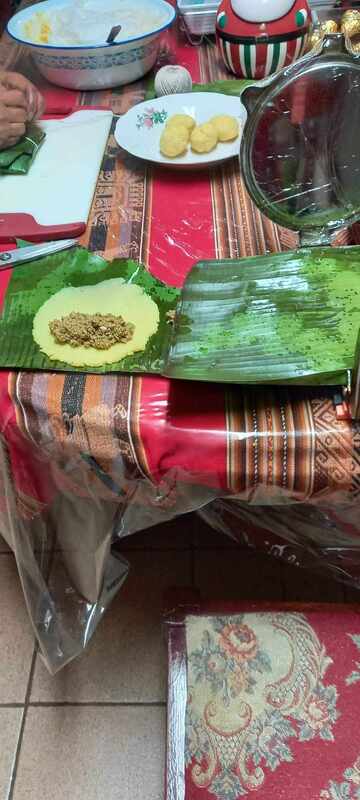

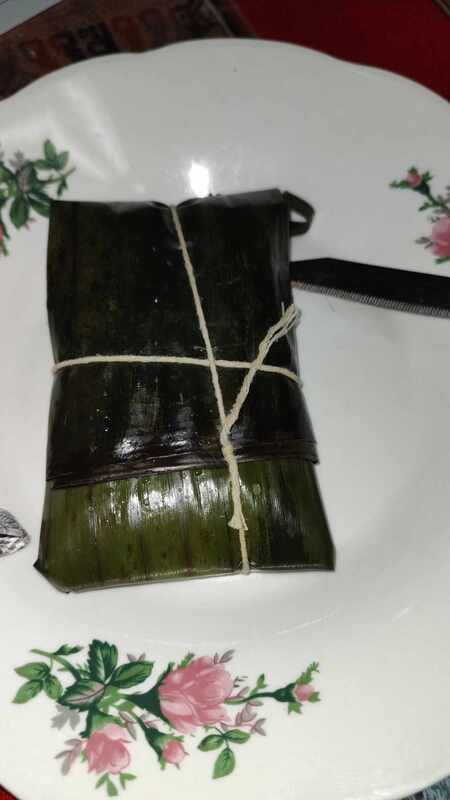





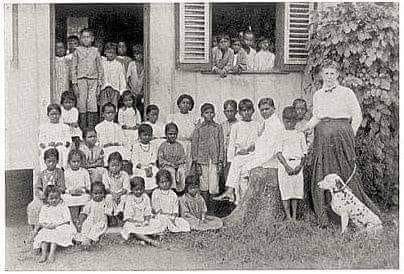
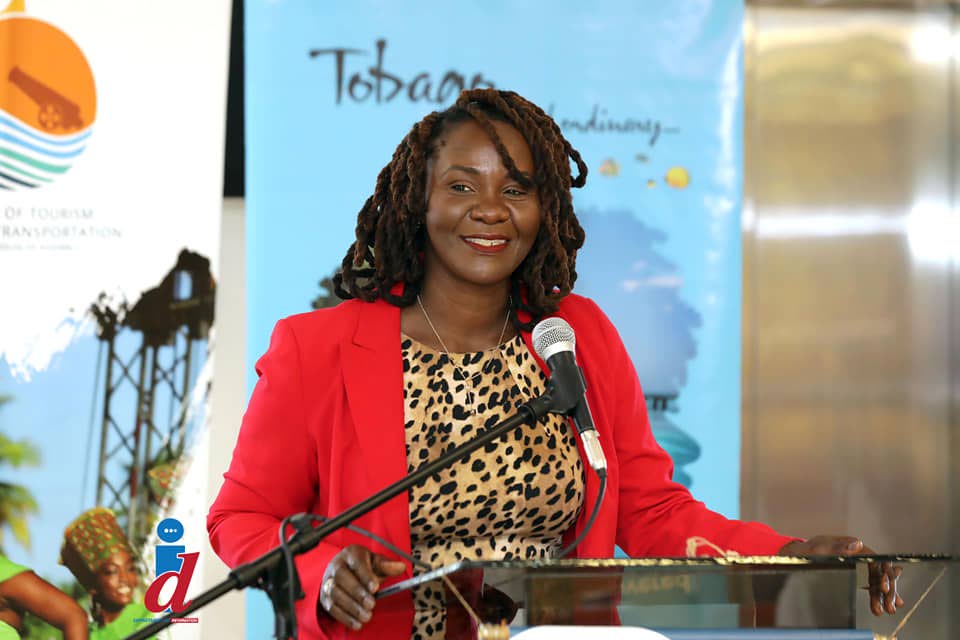
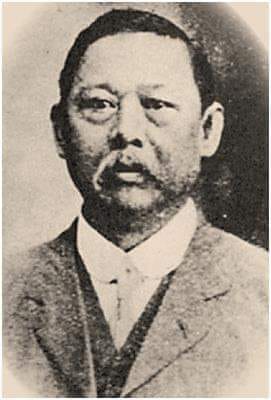
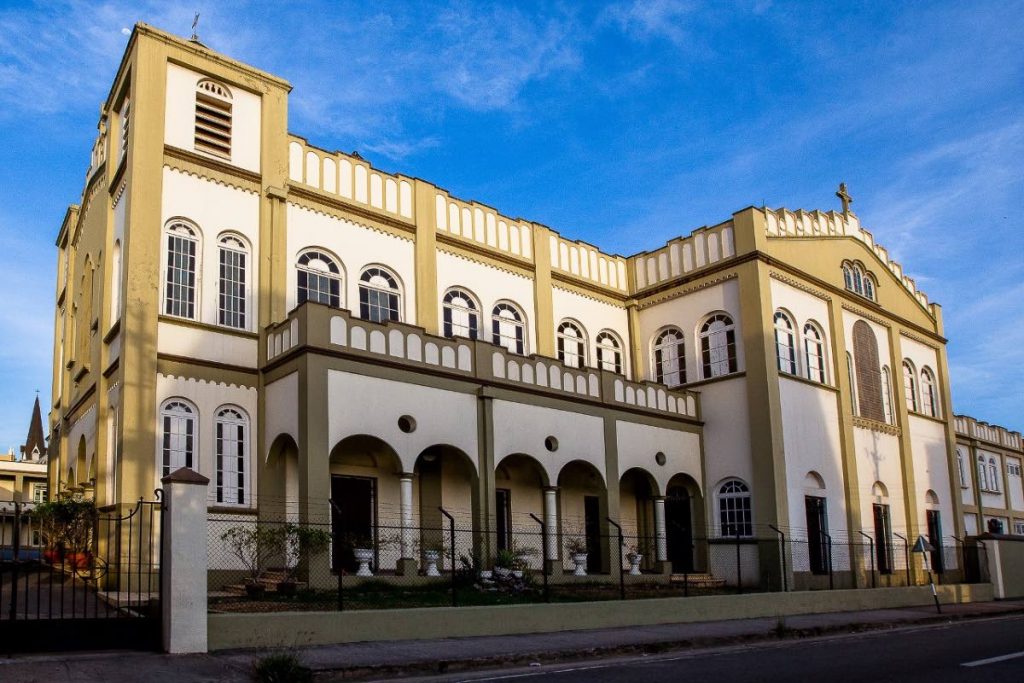

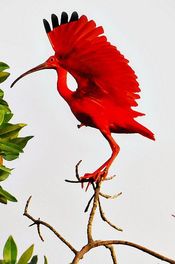
 RSS Feed
RSS Feed